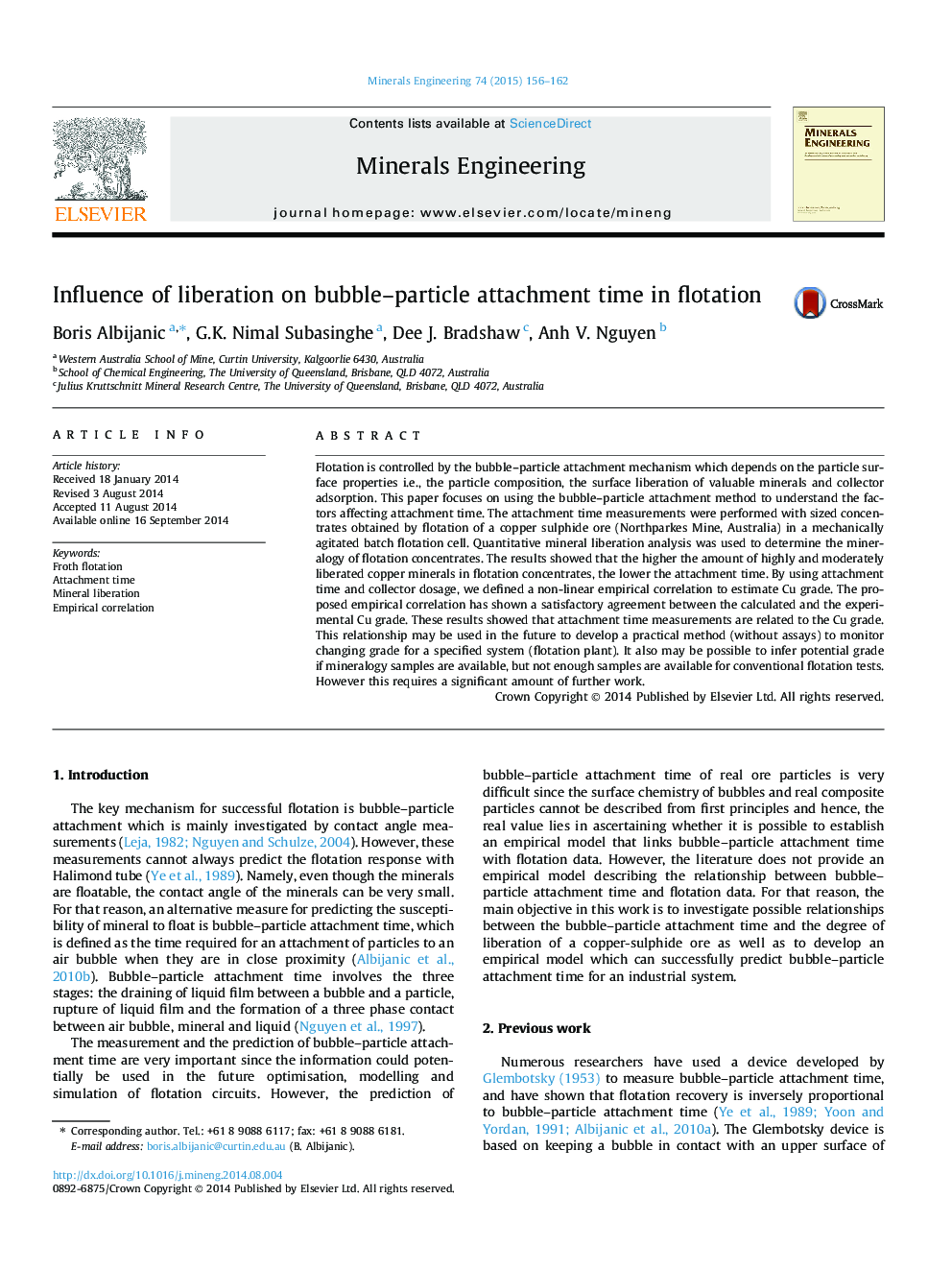| کد مقاله | کد نشریه | سال انتشار | مقاله انگلیسی | نسخه تمام متن |
|---|---|---|---|---|
| 233078 | 465321 | 2015 | 7 صفحه PDF | دانلود رایگان |
• Mineral liberation was studied with attachment time.
• The higher the amount of liberated minerals, the lower the attachment time.
• An empirical correlation between attachment time and Cu grade was developed.
Flotation is controlled by the bubble–particle attachment mechanism which depends on the particle surface properties i.e., the particle composition, the surface liberation of valuable minerals and collector adsorption. This paper focuses on using the bubble–particle attachment method to understand the factors affecting attachment time. The attachment time measurements were performed with sized concentrates obtained by flotation of a copper sulphide ore (Northparkes Mine, Australia) in a mechanically agitated batch flotation cell. Quantitative mineral liberation analysis was used to determine the mineralogy of flotation concentrates. The results showed that the higher the amount of highly and moderately liberated copper minerals in flotation concentrates, the lower the attachment time. By using attachment time and collector dosage, we defined a non-linear empirical correlation to estimate Cu grade. The proposed empirical correlation has shown a satisfactory agreement between the calculated and the experimental Cu grade. These results showed that attachment time measurements are related to the Cu grade. This relationship may be used in the future to develop a practical method (without assays) to monitor changing grade for a specified system (flotation plant). It also may be possible to infer potential grade if mineralogy samples are available, but not enough samples are available for conventional flotation tests. However this requires a significant amount of further work.
Figure optionsDownload as PowerPoint slide
Journal: Minerals Engineering - Volume 74, April 2015, Pages 156–162
